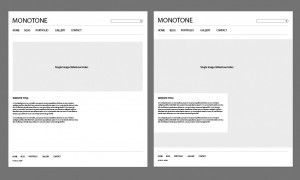With the latest release (5.6) of Concrete5 fresh out of the gates, I thought I’d share my thoughts about this CMS, particularly as we’ve been choosing this as a foundation for many of our recent projects, including Cambridge University Press’s soon to be new website. I’ll go into more detail in the weeks that follow, but I consider this underdog to be one of the strongest of the pack in PHP, and rightfully should take it’s place amongst the “Big Three” alternatives.
Strengths:
User Interface is extremely intuitive and all levels of expertise can take to editing the site very easily, ranging from the IT illiterate to the most advanced programmer.
There’s already a large and helpful user base, and a constantly growing marketplace. E-commerce add-ons are simply a joy to use, and plenty of free themes and “blocks” can be installed at the click of a button.
Unparalleled support from the developers, even the CEO of the Concrete 5 outfit is regularly pitching in when he feels there’s something important being discussed in the community.
Fantastic permission granularity, allowing detailed control of users.
Enterprise grade work-flow management system is now built in.
A simple to understand structure, that allows even novice programmers to get started without much delay, along with a good MVC architecture.
Good inbuilt functionality, along with a fast search engine.
Search Engine Optimization build in.
Free translation packages allow you to provide a localized site relatively easily.
Great cache integration.
Weaknesses:
There are bugs still appearing in the releases more regularly than we’d like to see.
The system is flexible at a cost, without consideration and understanding for the structure, one could end up building a slow site that attempts to join far too many tables during the course of a page render.
Collections (the name given to Pages on your site) are very expensive to initialize too. We’re breaking into SQL a little more often than we’d expect, simply to avoid penalties on loading full collections on larger operations.
Add-ons can be costly when compared with alternative CMS’s.
Listing Pages, an opening killer feature in the system, can’t actually be done so over custom attribute values out of the box. SQL or the Page List Plus block is mandatory as you get more exotic with your needs.
I’m not sure this is a weakness, but the developers seem to have a genuinely reasonable attitude of sacrificing performance for ease of use and extendibility, but as your site gets large, you will need to compensate more and more. That said, Concrete5 has been set up in a well performing manner with millions of pages inside the system, so don’t take that too much to heart.
Tune in over the coming months as I share my experiences further, but as of now, I really am excited to be working with this system for our clients.




